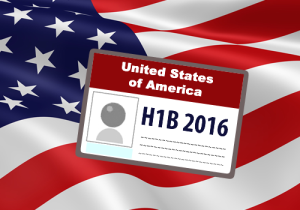DMV and Lengthy Adjudication Issues for H-1B and L-1 Nonimmigrants

The USCIS Ombudsman held a teleconference on DMV issues for H-1B and L-1 visa holders in the United States who are in their 240 days of automatic employment authorization extension. This extension goes into effect if an extension petition is timely filed by the beneficiary’s petitioner and the beneficiary’s original expiration date has been reached. If an H-1B’s petition end date is September 30, 2016, the automatic 240 days of employment authorization go into effect on October 1, 2016, so that the beneficiary maintains her lawful presence while the extension petition is pending.
There are DMV issues because states act differently when it comes to issuing driver’s licenses during that period of employment authorization. The 240-day extension provides for lawful presence, but it does NOT provide for lawful status. The law that governs driver’s licenses emphasizes lawful status, not presence. This has caused problems for multitudes of H-1B and L-1 nonimmigrants, especially in recent months. Both the California and Vermont Service Centers are taking an uncharacteristically long time to adjudicate H-1B and L-1 extension petitions. Both service centers have a track record of spending around 2 months on adjudication, which is their goal. They are still adjudicating petitions from the summer of 2015. This is incredibly problematic for H-1B and L-1 visa holders and their employers. The earliest an extension petition can be filed is 180 days in advance. USCIS is taking longer than 180 days to adjudicate regularly filed petitions, so the 240-day extension goes into effect and the beneficiary loses lawful status. That can have ramifications, such as the loss of a driver’s license. That affects the beneficiary’s ability to drive to work and live life normally, if the state is unwilling to extend the driver’s license. Some states have taken a hybrid approach, granting a temporary driver’s privilege card while the 240-day extension is in effect.
The Ombudsman concluded that it was monitoring the situation. It has been known for months that USCIS is taking an unusually long time on adjudicating these petitions, much to the detriment of employers and employees. AILA has published a scathing letter critiquing the delays and lack of remediation. The lengthy delays are constructively forcing employers to pay $1,225 for premium processing, on top of the other fees that those petitions entail.
